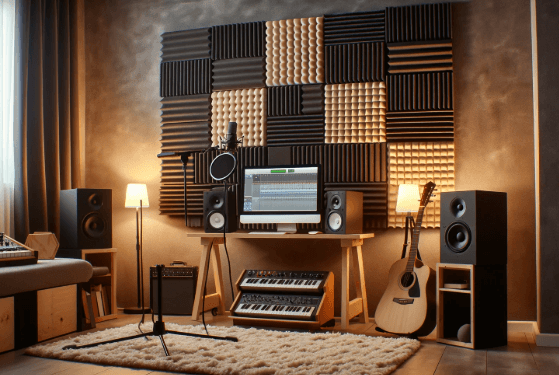Choosing the Right Acoustic Foam: What to Consider Before You Buy

The right soundproofing materials make a significant difference when designing a space for sound recording or improving audio quality. But what factors should guide you in selecting the best sound treatment solution? How do you ensure that the product meets both your aesthetic and functional needs?
Finding the right acoustic foam involves more than just picking a visually appealing style. It requires a balance of functionality, quality, and compatibility with your space. Selecting the appropriate material can enhance sound clarity, reduce echo, and provide an overall better acoustic experience. But with so many options available, knowing what to look for becomes essential.
Why Density Matters for Sound Absorption
Density is one of the primary aspects to consider when choosing soundproofing materials. Higher-density materials are generally better at absorbing sound, especially low-frequency noises, which can be more challenging to control. Thicker and denser materials capture a broader range of frequencies, providing an effective solution for spaces where sound quality is critical.
Choosing the right density depends on the specific purpose of your space. For instance, a professional recording studio may require materials different from that of a home theatre. Knowing the density needs of your environment helps you select a product that will effectively manage the sound levels in that setting.
See also: Effective Pest Removal in Virginia: Protect Your Home and Health
The Importance of Shape and Design for Efficiency
When browsing for soundproofing options, you will likely encounter various shapes and designs, such as pyramids, wedges, and panels. Each shape serves a unique purpose in managing sound reflections and reducing echoes. Wedge designs, for instance, are often effective at controlling mid to high-frequency sounds, while pyramid-shaped panels offer balanced absorption across different frequencies.
The shape also influences the way sound waves interact with the material. Different designs can achieve specific effects, so consider how each shape matches the acoustic needs of your space. Like music studios, rooms with complex sound requirements may benefit from a combination of shapes to achieve optimal sound control.
Consider the Thickness for Enhanced Sound Control
Thickness plays a significant role in the effectiveness of soundproofing materials. Generally, thicker options provide superior control over a wider range of frequencies. Thicker materials capture sound more effectively, making them suitable for rooms with heightened noise levels or for applications requiring high-quality sound control.
However, the right thickness should balance soundproofing needs with the room’s size and purpose. Thinner options may be more appropriate and cost-effective in smaller rooms or spaces with minimal sound interference. Selecting the right thickness not only impacts sound quality but also affects the room’s visual appearance.
Ease of Installation: What to Look For
Installation is an important consideration, especially if you apply soundproofing materials. Many options come with adhesive backing, allowing for straightforward attachment to walls and ceilings. Other designs might require specialised mounting equipment, which may need professional assistance if you are aiming for a specific layout or pattern.
Removable designs are available for those looking to update or alter their soundproofing setup regularly. These can be adjusted easily without causing damage to walls, providing flexibility for individuals who plan to make changes to their acoustic layout in the future.
Key Features of Acoustic Materials to Consider
Choosing the best sound treatment product depends on various factors, including functionality, cost, and aesthetics. Here are some features to consider:
- Durability: High-quality materials that resist wear and tear ensure longevity.
- Fire Resistance: Some materials meet fire safety standards, which are important for residential and commercial settings.
- Colour and Finish Options: Finding colours that match the decor of your space can enhance both form and function.
- Eco-Friendliness: Certain products are made from sustainable materials, making them an ideal choice for environmentally conscious buyers.
Choosing the right acoustic foam is essential for creating a balanced and controlled sound environment. By focusing on the essential factors, you can ensure that the soundproofing solution aligns with your space’s unique needs. Thoughtful selection not only improves sound quality but also adds value to the overall acoustic experience in any setting.




